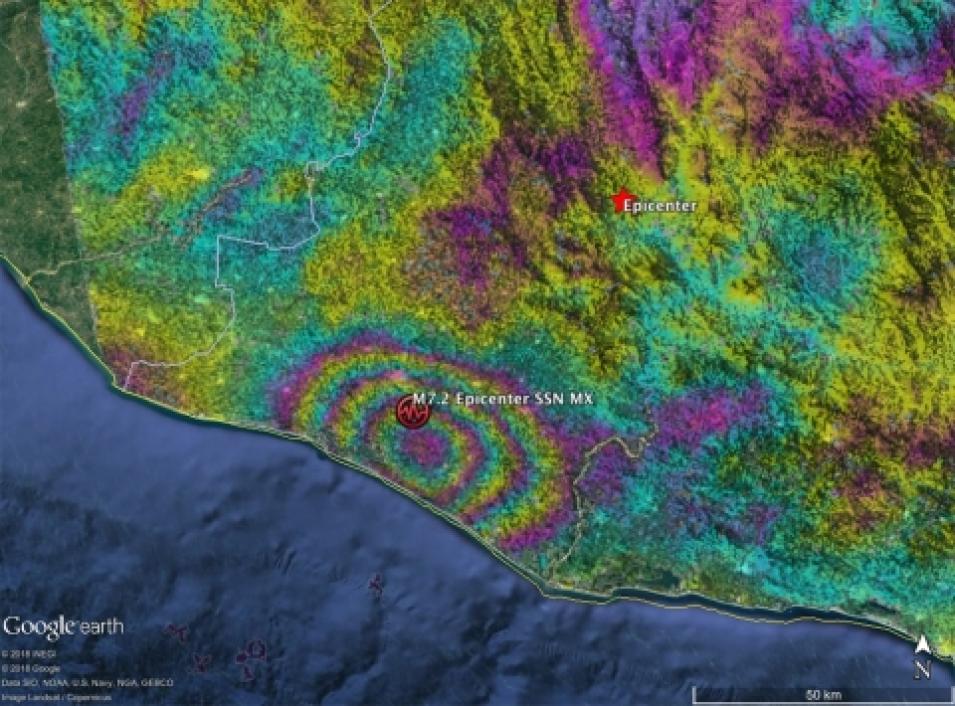Dr. Zhong Lu, Shuler-Foscue Professor of Geophysics in the Roy M. Huffington Department of Earth Sciences, Southern Methodist University
Research Interests: The development of satellite radar remote sensing techniques and their application to the study of natural and human-caused geohazards.
Research Highlights: When used in the context of Earth science, the phrase “satellite data” often refers to the optical imagery of Earth’s atmosphere, land, and ocean like that seen in NASA Worldview. Yet, there is another, often less discussed, type of satellite data that have been quietly shaking up the remote sensing community since the 1990s: Synthetic Aperture Radar (SAR).
SAR sensors measure features of the planet’s surface by bouncing microwave signals off Earth. Because it uses much longer wavelengths than instruments like the Operational Land Imager (OLI) aboard the joint NASA/USGS Landsat satellites and the Moderate Resolution Imaging Spectroradiometer (MODIS) aboard NASA’s NASA’s Terra and Aqua satellites, SAR can do things these instruments can’t, such as “see” in the dark and through clouds and rain.
SAR wavelengths (or bands) are designated by a letter, such as C, L, P, and X, and each band has different attributes pertaining to how it interacts with the surface and how far it can penetrate into a given medium. For example, X-band, which has a wavelength of about 3 centimeters (cm) has little capability to penetrate into broadleaf forest, while L-band, which has a wavelength of 15 to 30 cm, can penetrate Earth’s vegetation canopy to reach the ground surface. (Note: you can see a table showing the common uses for each band on the Earthdata website.)
Over the years, scientists working in a range of disciplines have devised a host of clever ways to use SAR to study everything from the hidden settlements of early human civilizations to the minute deformations in Earth's crust that might provide clues about when a volcano might erupt. One of these scientists is Dr. Zhong Lu, the Shuler-Foscue Professor of Geophysics in the Roy M. Huffington Department of Earth Sciences at Southern Methodist University in Dallas, Texas. Lu educates students in the use of SAR and researches the development and use of satellite radar remote sensing techniques in a range of natural and anthropogenic geohazard applications, including volcano deformation, land subsidence, human-induced surface deformation, and landslide monitoring.
In addition to his work as an educator and researcher, Lu is also a member of NASA’s Alaska Satellite Facility Distributed Active Archive Center’s (ASF DAAC) User Working Group (UWG), which represents the user community in the development and operation of the ASF DAAC’s products and services.
The ASF DAAC specializes in the acquisition, processing, archiving, and distribution of SAR data, tools, and resources for NASA’s Earth Observing System Data and Information System (EOSDIS). Its SAR datasets originate from sensors on several satellite missions, including the ESA (European Space Agency) ERS-1 and -2, ENVISAT, and Sentinel-1 satellites; the Japan Aerospace Exploration Agency (JAXA) Japanese Earth Resources Satellite (JERS) and Advanced Land Observing Satellites (ALOS-1 and -2); the Canadian Space Agency's RADARSAT-1 satellite; and NASA’s Soil Moisture Active Passive (SMAP) and Seasat satellites. The ASF DAAC also acquires SAR data from the Spaceborne Imaging Radar-C (SIR-C), which flew aboard NASA’s Space Shuttle Endeavor and was part of NASA’s Airborne SAR (AIRSAR) and Uninhabited Aerial Vehicle SAR (UAVSAR) airborne missions.
